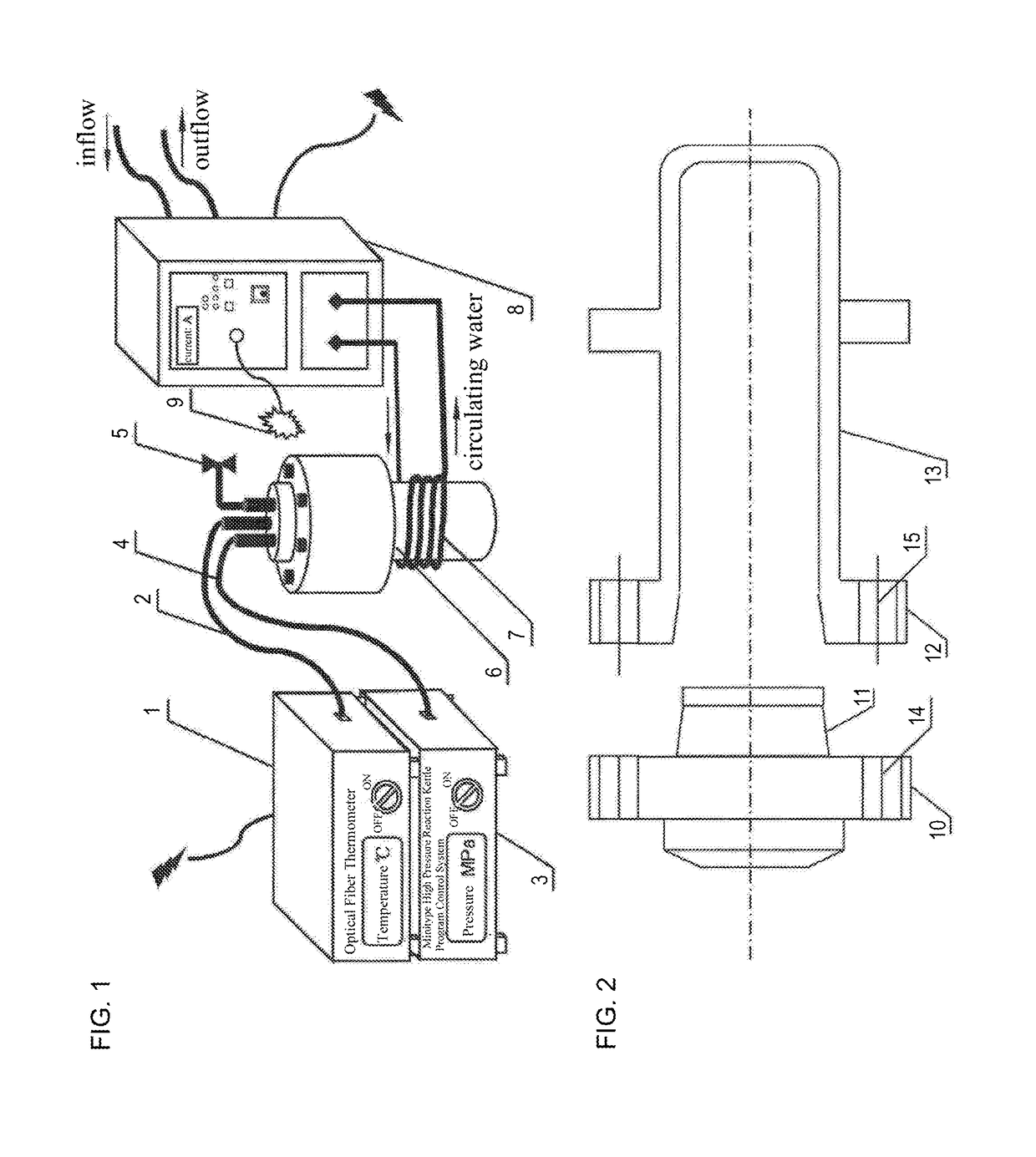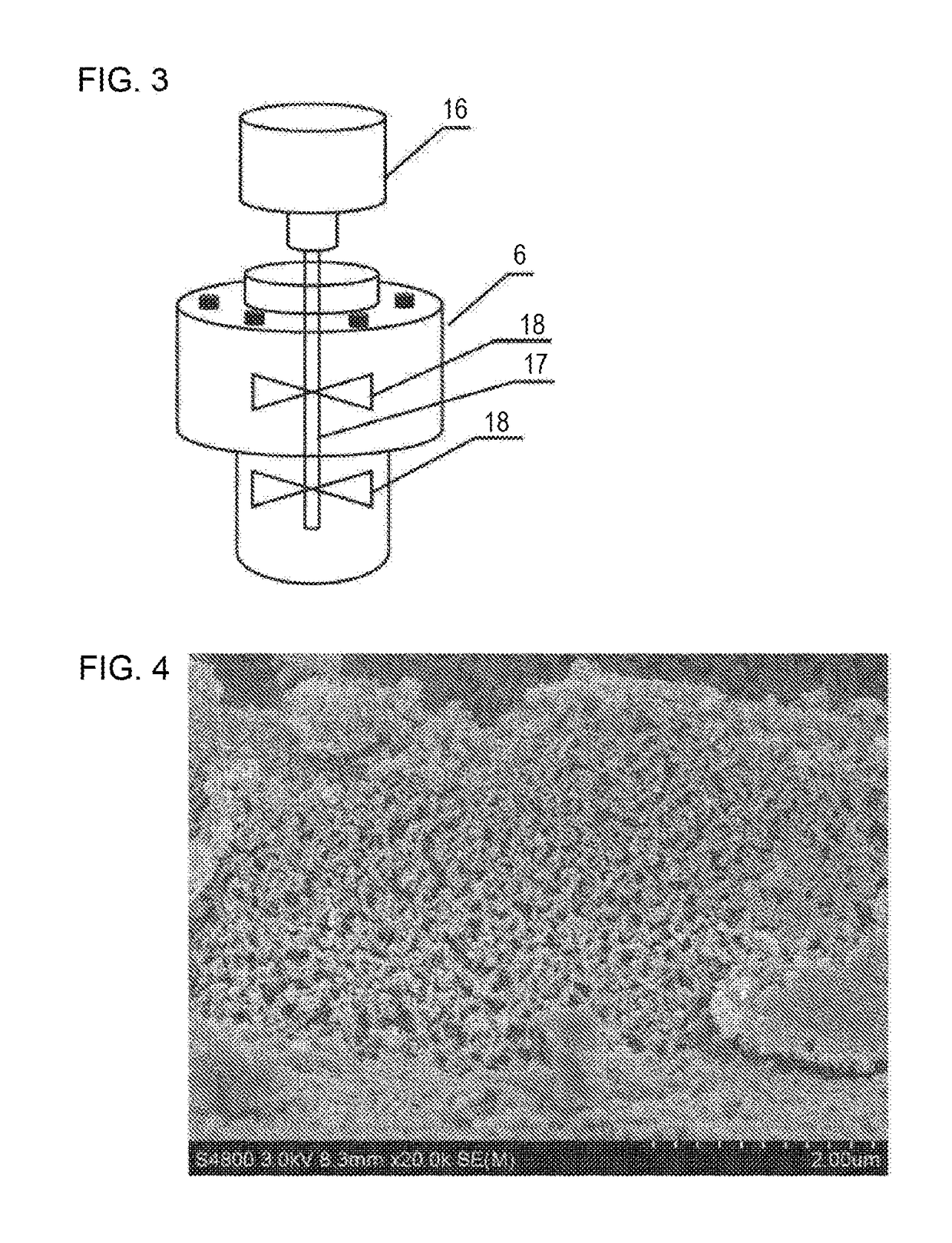Composite material preparation system and method effectively improving composite material interface bonding
a composite material and interface bonding technology, applied in the field of synthetic materials, can solve the problems of high cost, low yield, and inability to meet actual needs of traditional single-phase materials, and achieve excellent interface bonding and effective improvement of the interface bonding of composite materials
- Summary
- Abstract
- Description
- Claims
- Application Information
AI Technical Summary
Benefits of technology
Problems solved by technology
Method used
Image
Examples
example 1
[0078]Step 1: 0.012 mol of potassium permanganate is dissolved in 30 ml of distilled water, with magnetic stirring for 30 minutes to obtain a 0.4 mol / L of potassium permanganate solution;
[0079]Step 2: 0.012 mol of phenylpropionaldehyde is dissolved in 30 ml of distilled water, with magnetic stirring for 30 minutes to obtain a 0.4 mol / L of phenylpropionaldehyde solution;
[0080]Step 3: the potassium permanganate solution and the phenylpropionaldehyde solution are mixed and magnetically stirred for 30 minutes to obtain a reaction precursor solution C;
[0081]Step 4: the precursor solution C is transferred to a reaction kettle, to which graphite sheets capable of sensing an alternating magnetic field is added. The reaction kettle is sealed and placed in a hydrothermal induction heating device for reaction for 24 hours under an induction frequency of 50 kHz and an output current of 200 A, then naturally cooled to room temperature;
[0082]Step 5: the compound product is separated from the susp...
example 2
[0083]Step 1: 0.015 mol of potassium permanganate is dissolved in 30 ml of distilled water, with magnetic stirring for 50 minutes to obtain a 0.5 mol / L of potassium permanganate solution;
[0084]Step 2: 0.015 mol of phenylpropionaldehyde is dissolved in 30 ml of distilled water, with magnetic stirring for 50 minutes to obtain a 0.5 mol / L of phenylpropionaldehyde solution;
[0085]Step 3: the potassium permanganate solution and the phenylpropionaldehyde solution are mixed and magnetically stirred for 50 minutes to obtain a reaction precursor solution C;
[0086]Step 4: the precursor solution C is transferred to a reaction kettle, to which graphite sheets capable of sensing an alternating magnetic field is added. The reaction kettle is sealed and placed in a hydrothermal induction heating device for a reaction for 16 hours under an induction frequency of 50 kHz and an output current of 300 A, then naturally cooled to room temperature;
[0087]Step 5: the compound product is separated from the su...
example 3
[0088]Step 1: 0.02 mol of potassium permanganate is dissolved in 30 ml of distilled water, with magnetic stirring for 70 minutes to obtain a 0.67 mol / L of potassium permanganate solution;
[0089]Step 2: 0.02 mol of phenylpropionaldehyde is dissolved in 30 ml of distilled water, with magnetic stirring for 70 minutes to obtain a 0.67 mol / L of phenylpropionaldehyde solution;
[0090]Step 3: the potassium permanganate solution and the phenylpropionaldehyde solution are mixed and magnetically stirred for 70 minutes to obtain a reaction precursor solution C;
[0091]Step 4: the precursor solution C is transferred to a reaction kettle, to which graphite sheets capable of sensing an alternating magnetic field is added. The reaction kettle is sealed and placed in an induction heating device for a reaction for 10 hours under an induction frequency of 50 kHz and an output current of 400 A, then naturally cooled to room temperature;
[0092]Step 5: the compound product is separated from the suspension aft...
PUM
 Login to View More
Login to View More Abstract
Description
Claims
Application Information
 Login to View More
Login to View More - R&D
- Intellectual Property
- Life Sciences
- Materials
- Tech Scout
- Unparalleled Data Quality
- Higher Quality Content
- 60% Fewer Hallucinations
Browse by: Latest US Patents, China's latest patents, Technical Efficacy Thesaurus, Application Domain, Technology Topic, Popular Technical Reports.
© 2025 PatSnap. All rights reserved.Legal|Privacy policy|Modern Slavery Act Transparency Statement|Sitemap|About US| Contact US: help@patsnap.com



